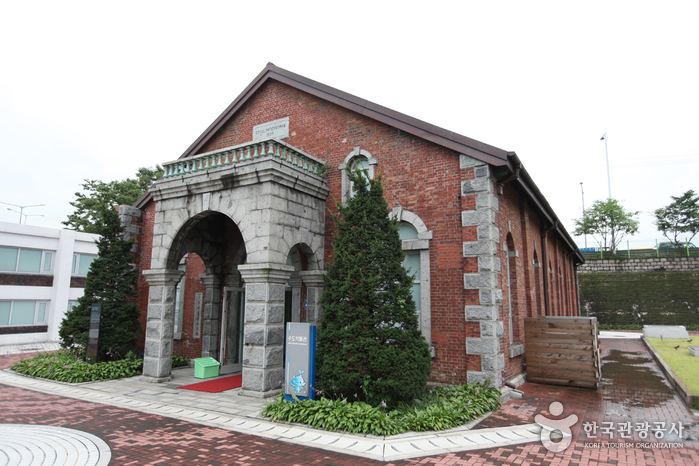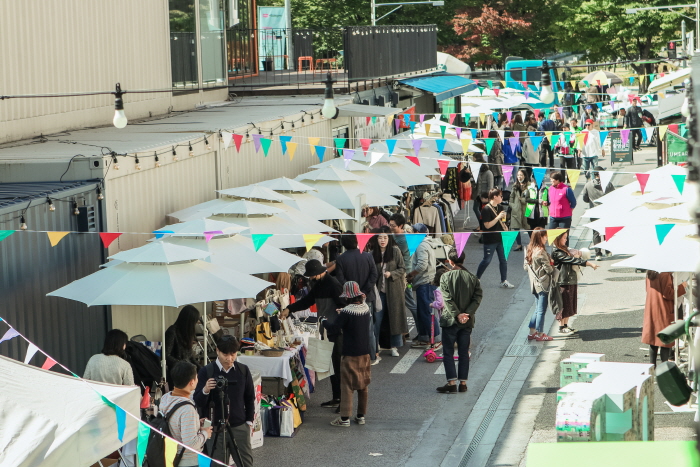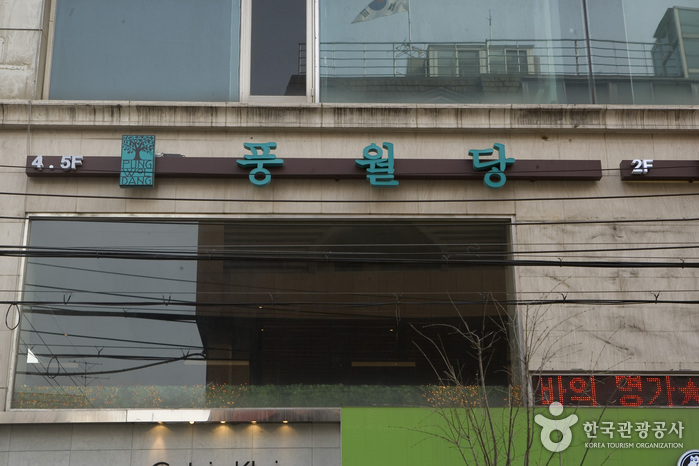Mingles (밍글스)
7.5Km 2017-02-03
1F, 757, Seolleung-ro, Gangnam-gu, Seoul
+82-2-515-7306
Mingles creates a new taste based on traditional Korean cuisine. It offers various selections depending on one’s favorite flavors through a tasting guide introduced on the menu board.
Waterworks Museum (수도박물관)
7.5Km 2025-01-17
27, Wangsimni-ro, Seongdong-gu, Seoul
+82-2-3146-5936
The Ttukseom Water Purification Plant (Waterworks Museum and Slow Sand Filtration Basin) was completed in August 1908 as the first water purification plant ever built in Korea. In 2008, it celebrated 100 years of history with the opening of the Waterworks Museum, which showcases the history and value of Seoul's public waterworks. The museum was recognized for its modern architectural design and designated Tangible Cultural Asset of Seoul No.72.
Waple Wood Artwork Place (와플목공방)
7.5Km 2024-10-21
5-6 Wangsimni-ro 10-gil, Seongdong-gu, Seoul
Interior items made from wood
This workshop is visited by celebrities such as Park Narae of the entertainment program 'I Live Alone' and KAI of EXO. It is also the place where the senior wooden box that appeared in the movie 'PARASITE' was made. You can make your own interior accessories such as chairs and tabletops using hardwood. One-day classes on making ballpoint pens and mechanical pencils are also popular.
Sony - Sinsa Branch [Tax Refund Shop] (소니 신사)
7.5Km 2024-04-22
801, Seolleung-ro, Gangnam-gu, Seoul
-
Meal° (Seongsu) (밀도 성수점)
7.5Km 2023-10-23
96, Wangsimni-ro, Seongdong-gu, Seoul
Meal° (Seongsu) is a bakery located in front of Seongdong-gu Citizens' Sports Center, near Exit 1 of Seoul-forest Station (Suin–Bundang Line). Because the shop has no parking lot, visitors are advised to utilize buses, subways, and other public transportation when visiting. The shop itself is rather small, so it operates on a take-out-only basis. One can, however, opt to have the bread delivered. Signature menus include plain and rich bread, honey rusk, chocolate and honey rusk, cube custard, and strawberry jam bread. Other menus include scones, cube bread with streusel, and sandwiches. Nearby sites include Seongsu-dong Cafe Street, Seongsu Handmade Shoes Park, Seoulsup Forest, and Ttukseom Recreation Area.
Understand Avenue (언더스탠드에비뉴)
7.5Km 2023-10-23
63, Wangsimni-ro, Seongdong-gu, Seoul
Understand Avenue is an innovative startup platform that nurtures and builds the dreams of young entrepreneurs. It helps the talents of tomorrow work on things they want, are good at, and contribute to society through a full support process, from training to market testing, financial and investment support, and distribution and logistics support. Visitors can come to this place for socially-conscious select shops and products.
The platform also hosts pop-up stores and photography exhibitions on K-pop stars. One can also find retro-style merch beloved by the younger generations. There are plenty of things to see and splurge on, from mini figurines and key rings that capture one’s “faves” to retro and kitschy exhibitions and items inspired by the ‘70s and ‘80s. All pop-up stores and exhibitions require reservation (online reservation or on-site reservation).
Pungwoldang (풍월당)
7.5Km 2022-11-22
39, Dosan-daero 53-gil, Gangnam-gu, Seoul
+82-2-512-2222
First opened in June 2003, Pungwoldang is a cultural salon for classical music enthusiasts. It's filled with music albums and houses seminars, travel services, and a café. There are over 11,000 music albums (classical music CDs/DVDs and opera CDs) and a diversity of seminars related to classical music. Visitors can watch music-related movies free of charge and can receive a 50% discount at the café with each album purchase.
Hangang River (한강)
7.5Km 2024-10-29
257 Gangbyeonbuk-ro, Seongdong-gu, Seoul
+82-2-120
The Hangang River is a iconic river in Korea that crosses Seoul from north to south. Various parks and cultural facilities are located along the river, attracting numerous people to enjoy leisure and relaxation. Many people enjoy walking, biking, and jogging along the river. Water sports such as fishing, kayaking, and sailing are also popular, and the night view of the river from a cruise ship makes it even more beautiful. Events such as concerts, drone festivals, and fireworks displays are also a must-see.
Apgujeong Rodeo Street (압구정 로데오거리)
7.5Km 2024-03-18
Sinsa-dong, Gangnam-gu, Seoul
+82-2-3445-0111
Apgujeong Rodeo Street is a cultural street in Apgujeong full of luxury brands and multi-shops. It is a popular destination with significant foot traffic thanks to its convenient shopping opportunities, famous cafés and restaurants, and shops with unique interior design. This street is the place to experience Korean fashion and cultural trends. Nearby tourist sites include Cheongdam Fashion Street and Garosu Street of Sinsa-dong.
Renew Surgery [Tax Refund Shop] (리뉴외과의원)
7.5Km 2024-06-27
11F & 12F, J MEDI TOWER. 335, Dosan-daero, Gangnam-gu, Seoul
-



![Sony - Sinsa Branch [Tax Refund Shop] (소니 신사)](http://tong.visitkorea.or.kr/cms/resource/18/2889118_image2_1.jpg)


![Renew Surgery [Tax Refund Shop] (리뉴외과의원)](http://tong.visitkorea.or.kr/cms/resource/23/3314223_image2_1.jpg)
 English
English
 한국어
한국어 日本語
日本語 中文(简体)
中文(简体) Deutsch
Deutsch Français
Français Español
Español Русский
Русский